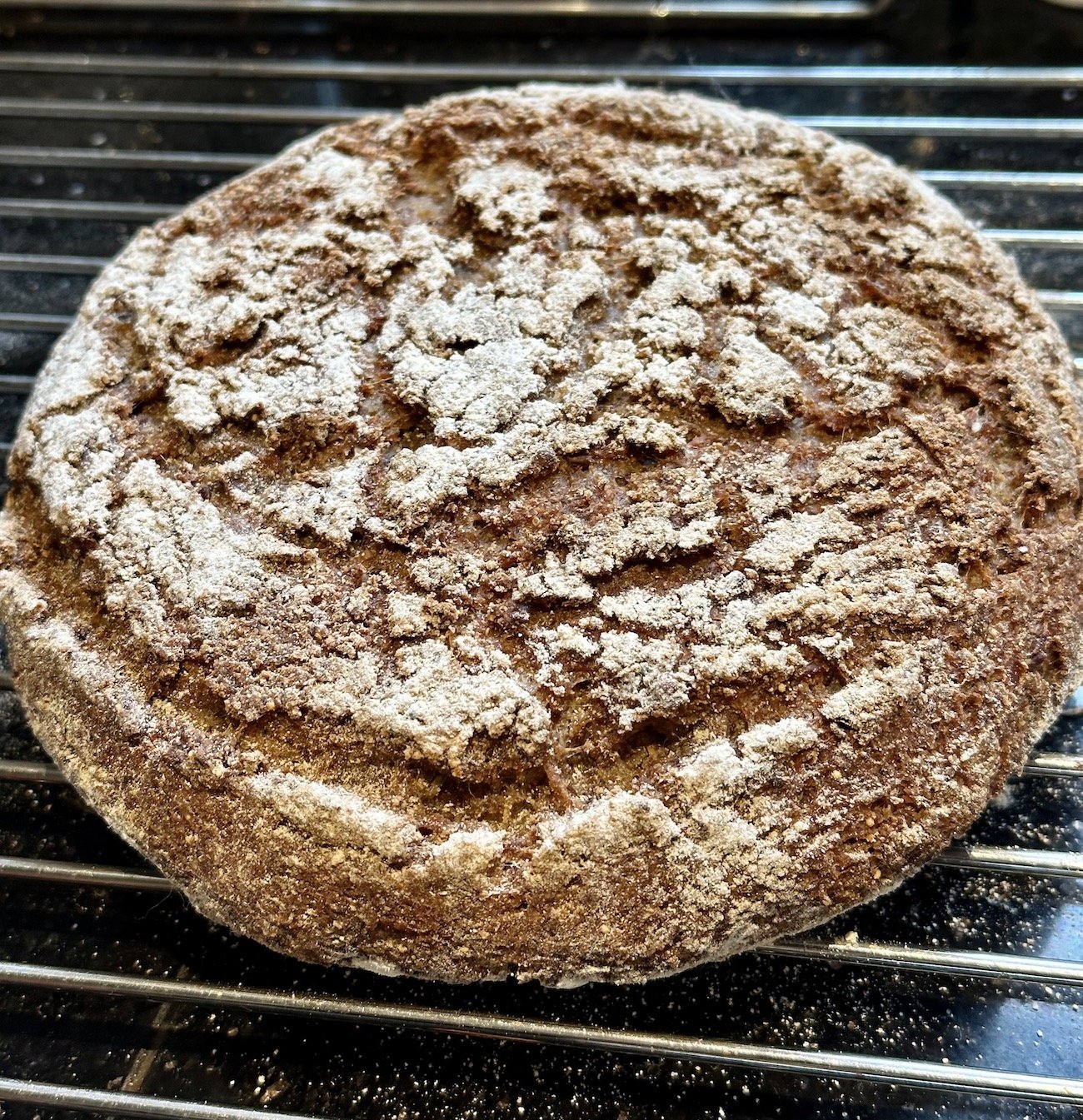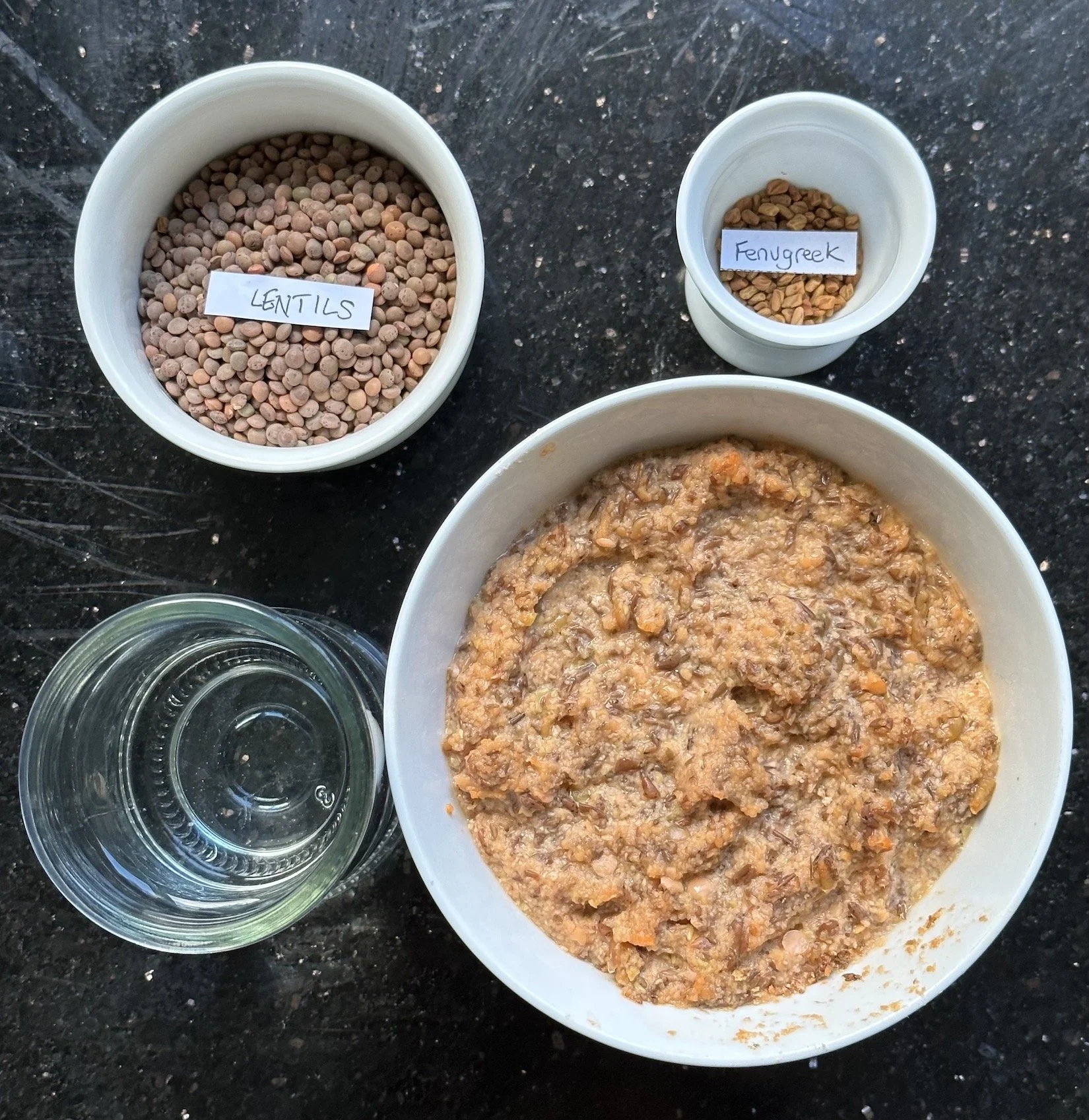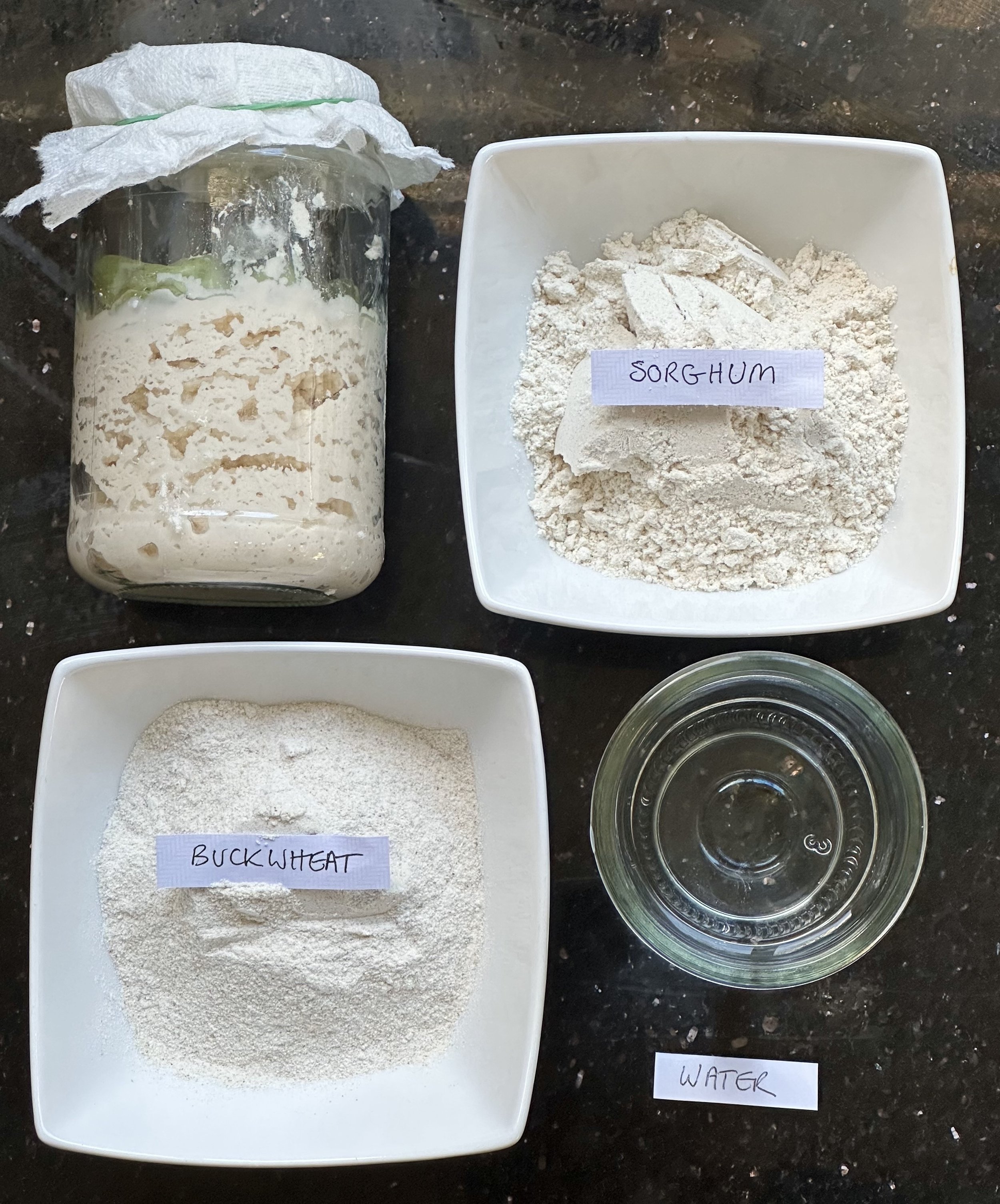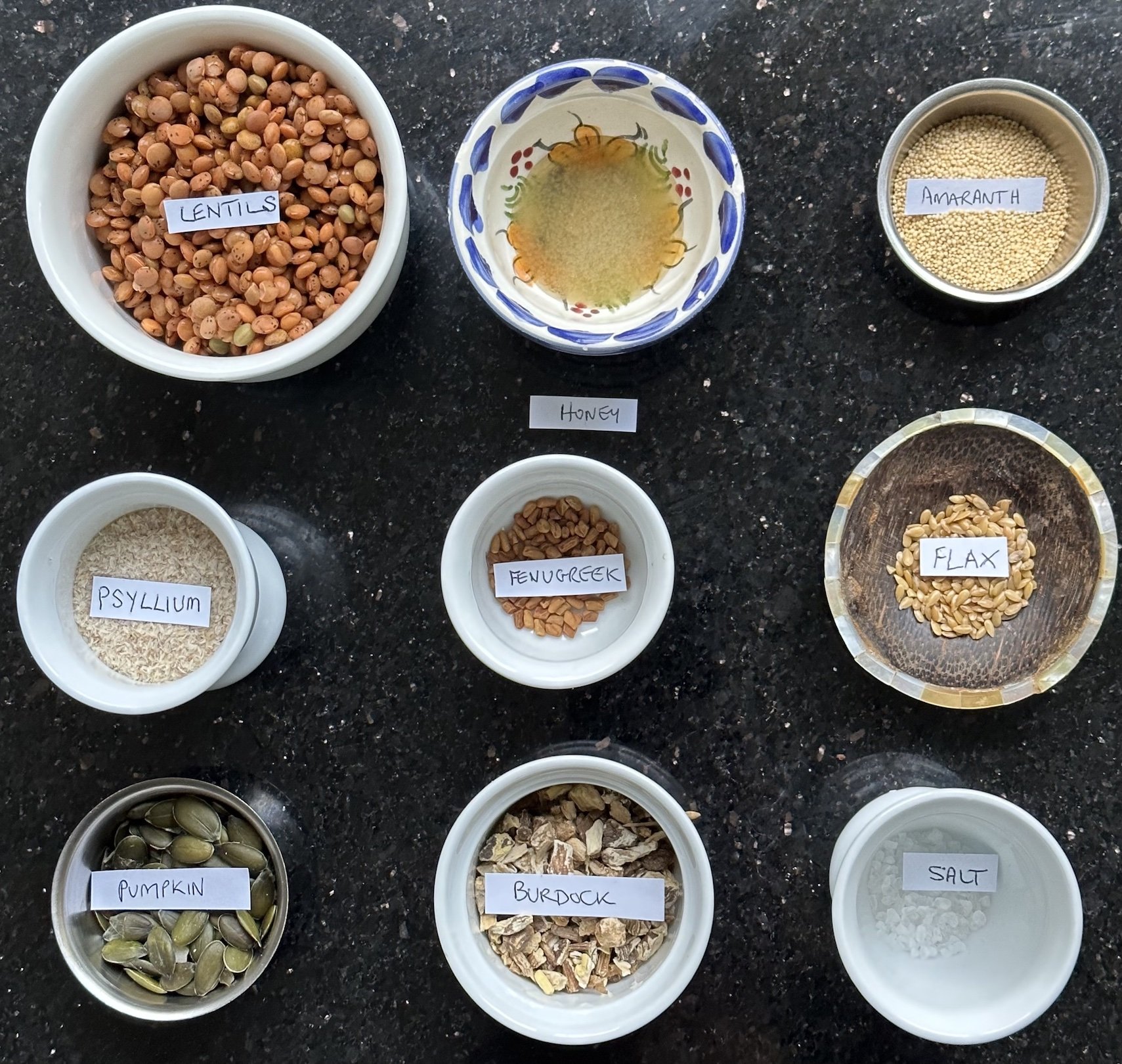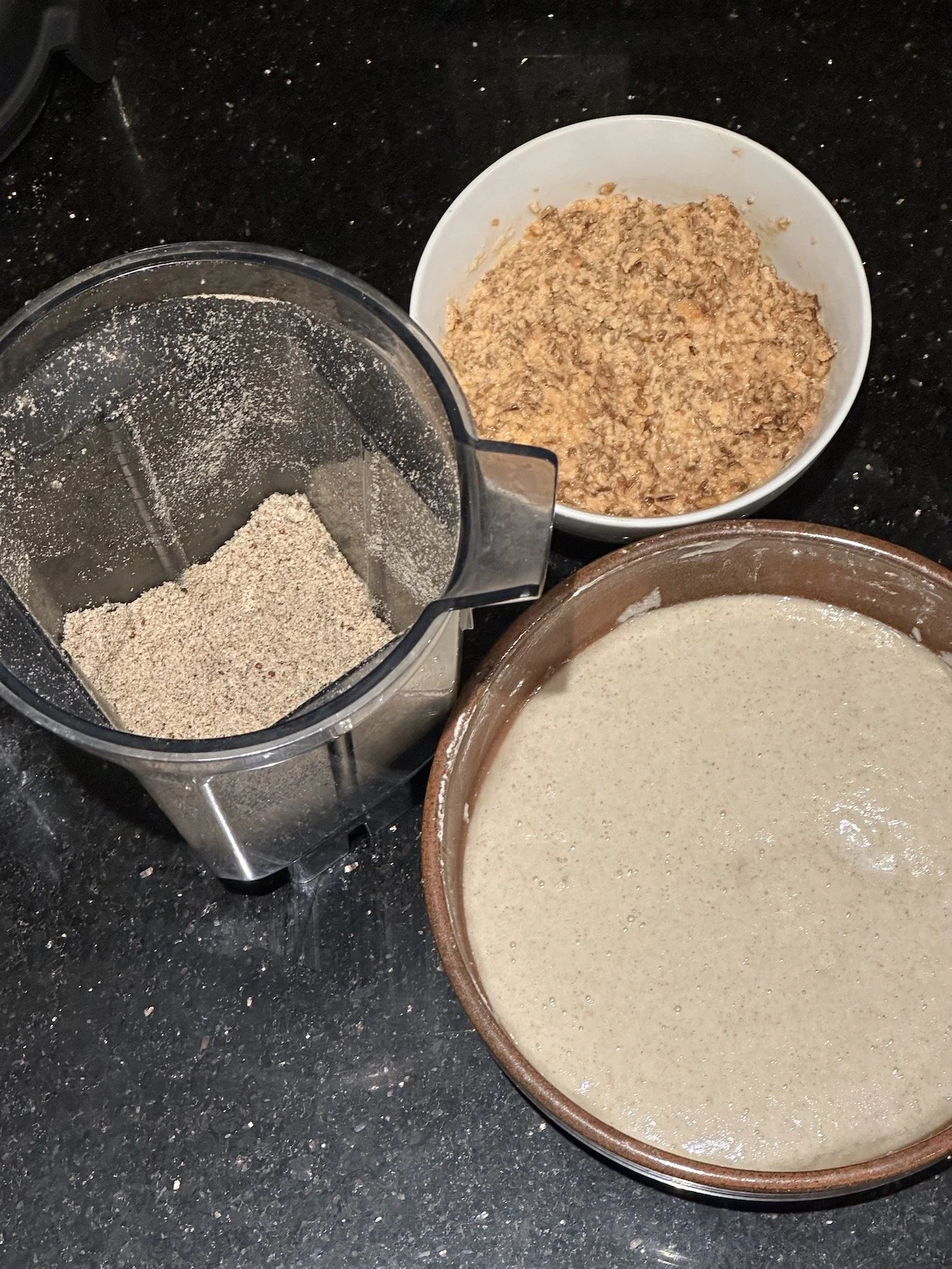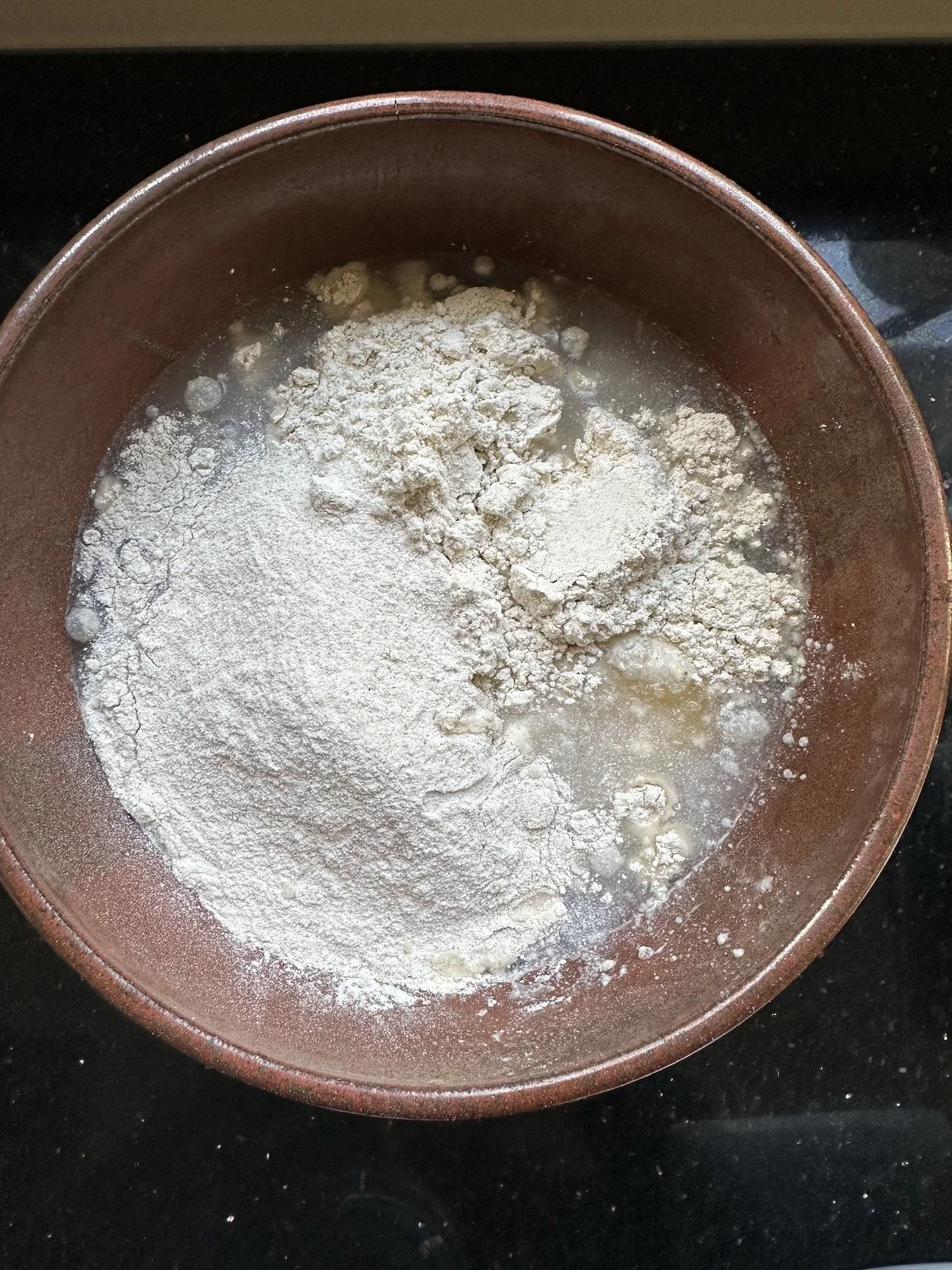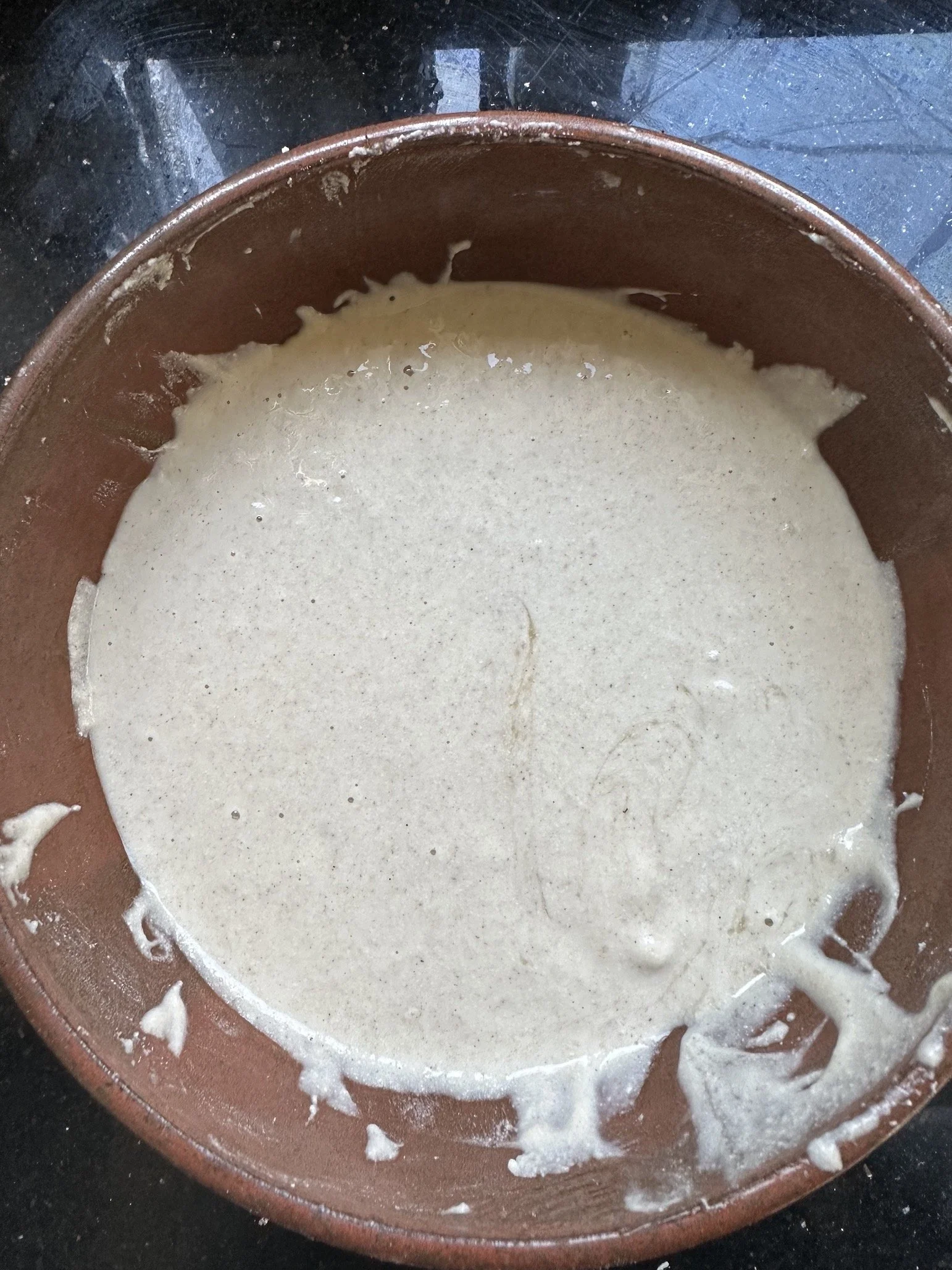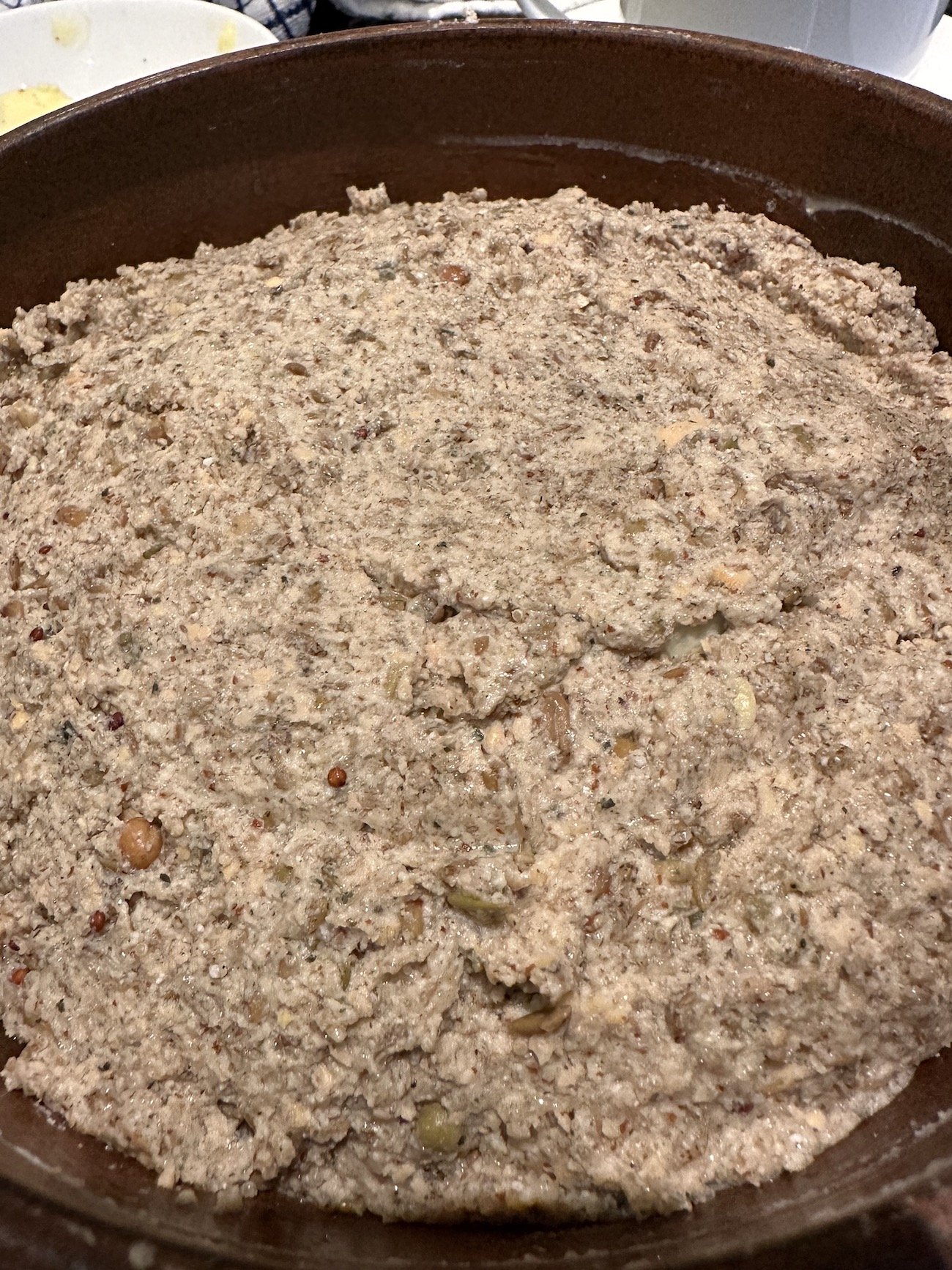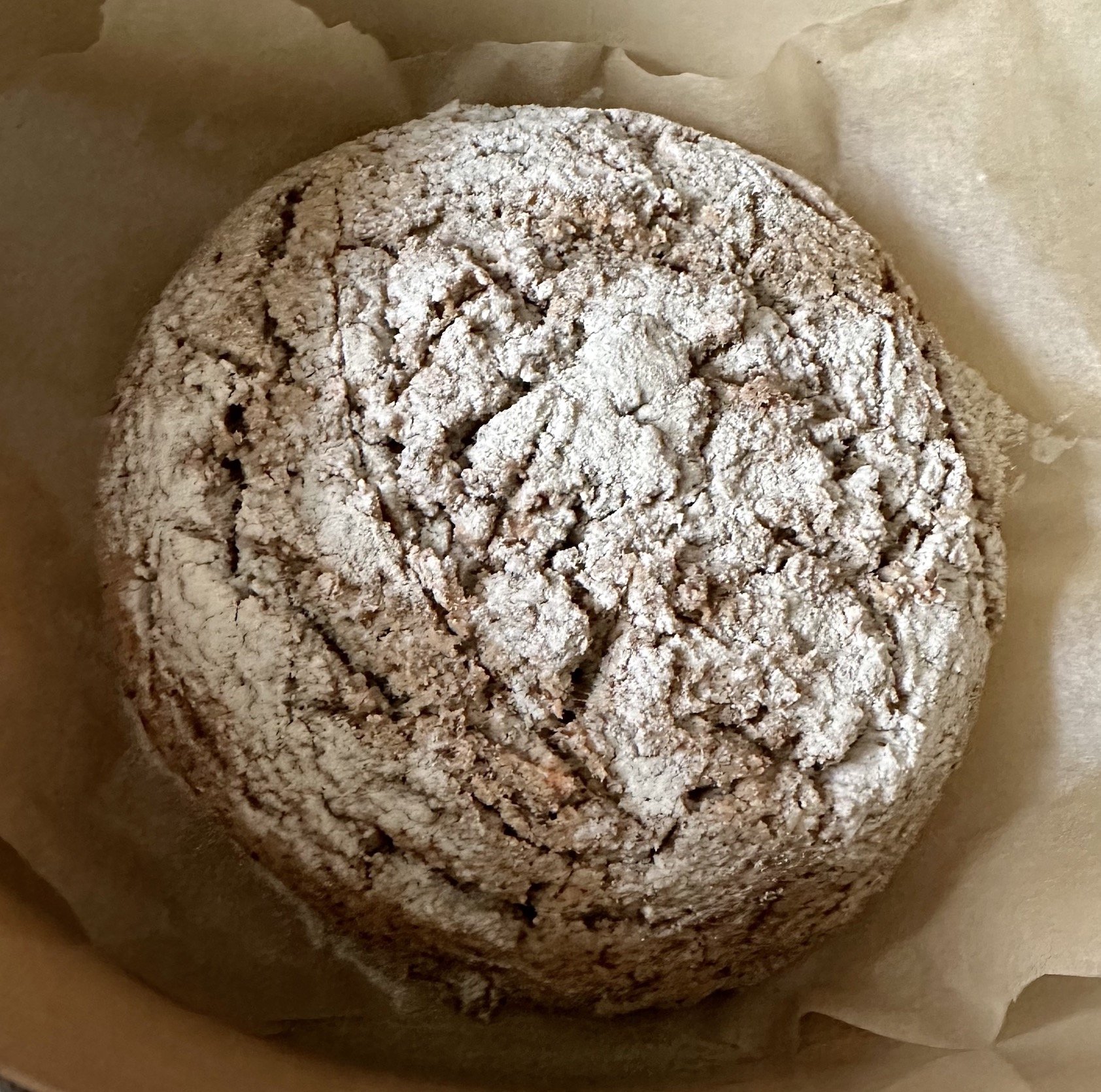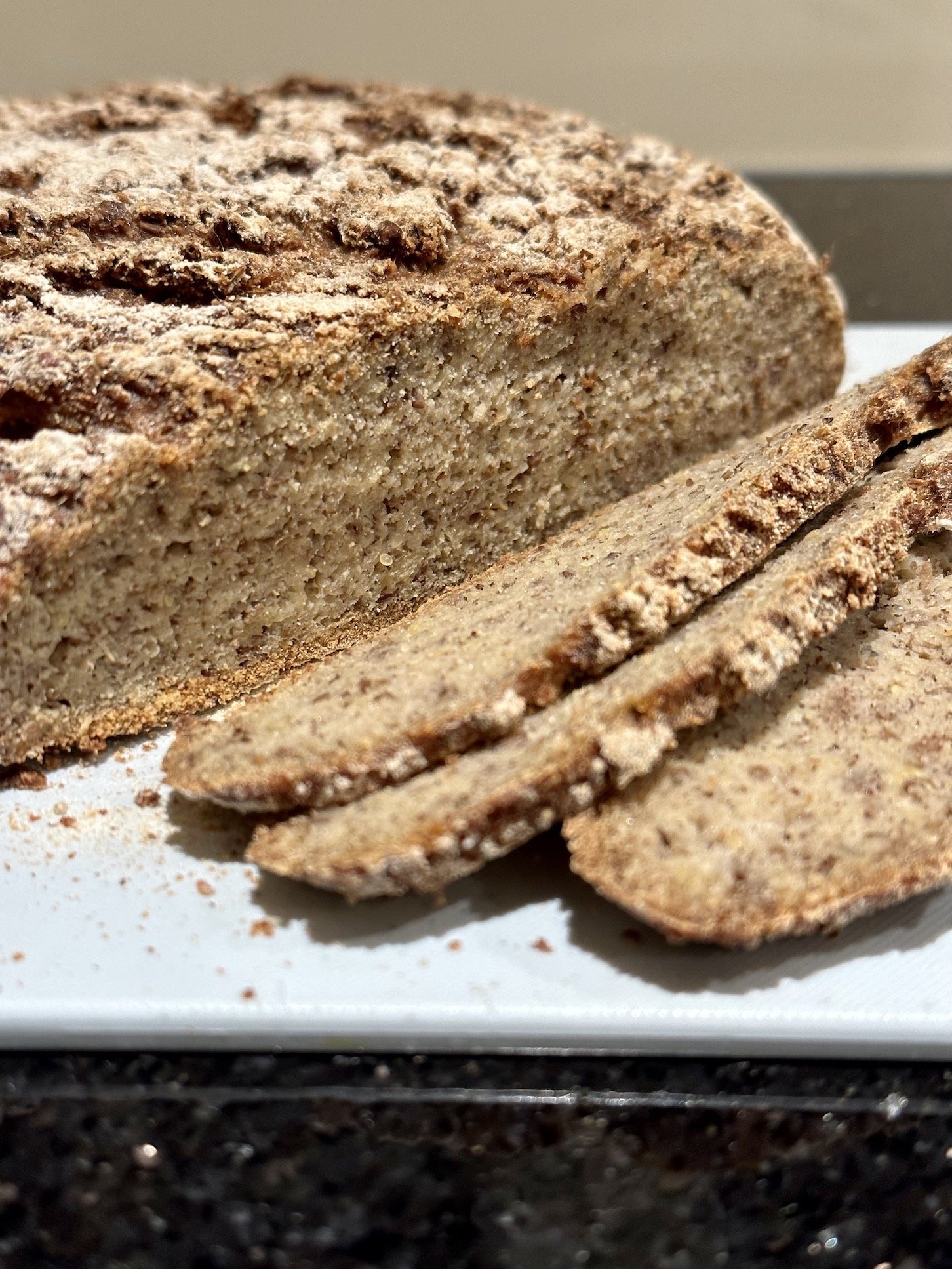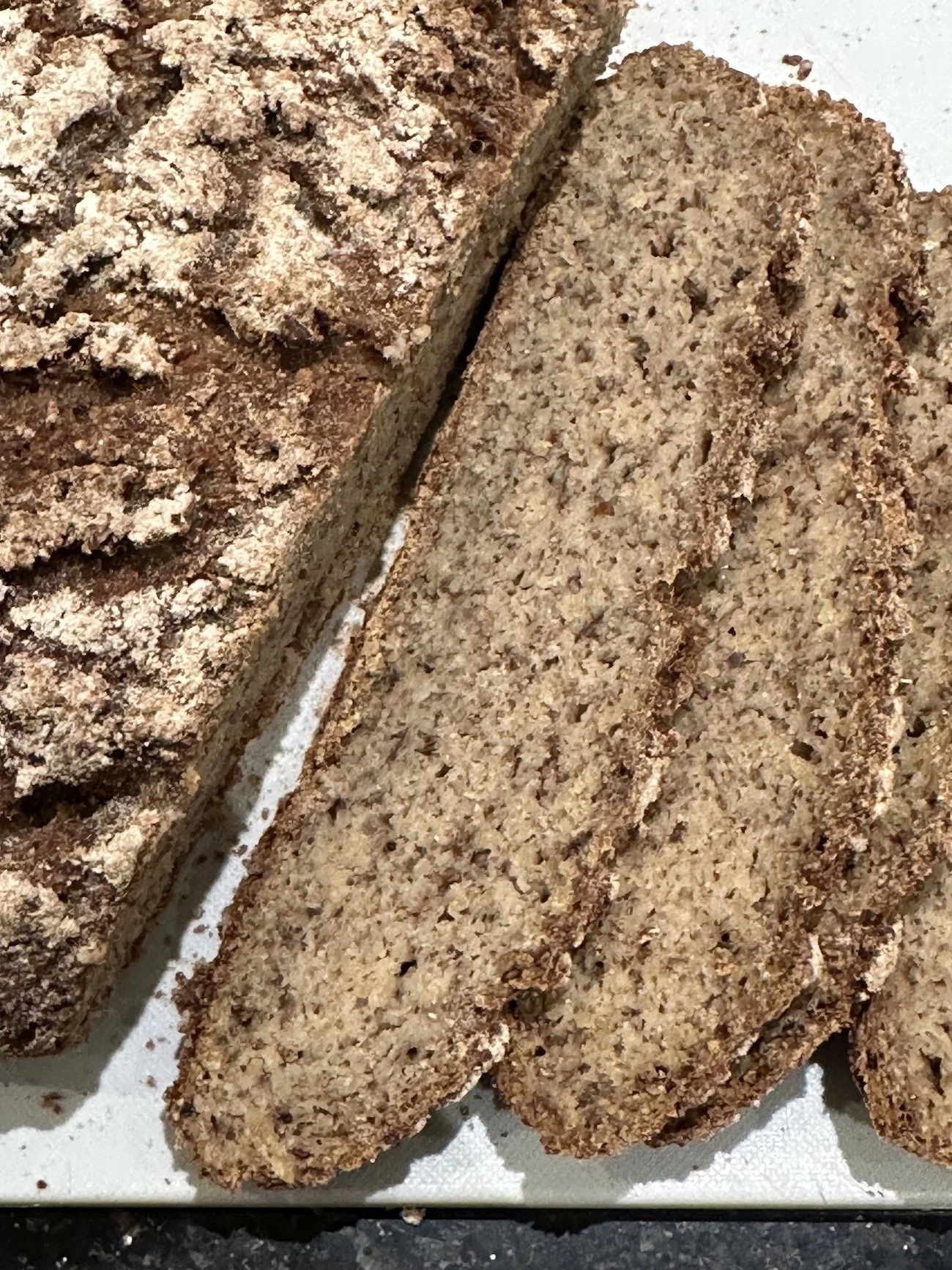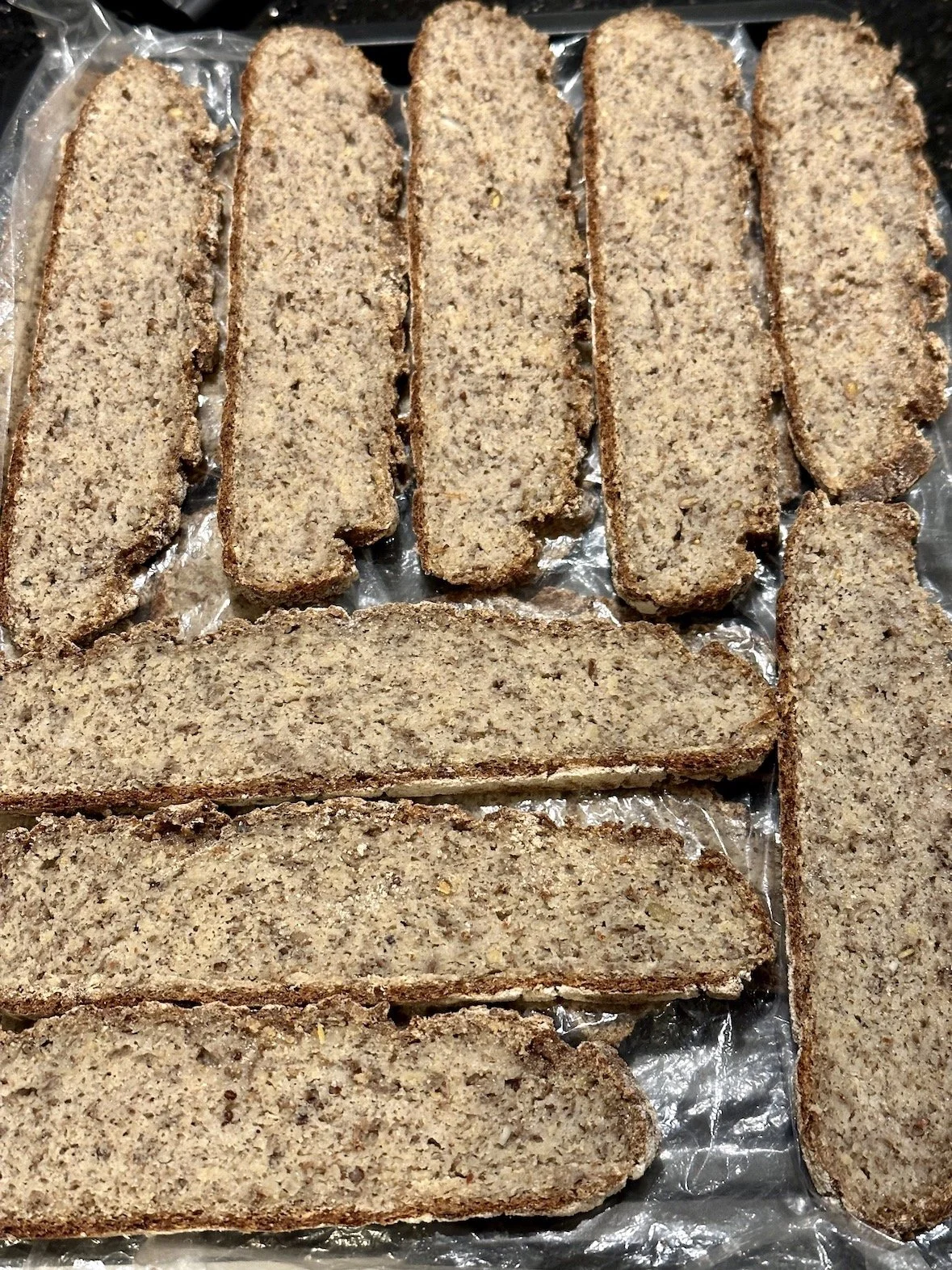Gluten Free Sourdough With Lentils
Just out of the oven!
Discovering that I needed to go gluten free 6 years ago to improve my health seemed like a culinary blow. I’d spent several years mastering the art of making conventional sourdough in various forms and I wasn’t ready to part with my token piece of daily toast, but while I didn’t suffer from celiac disease, wheat was not my friend. Once I made the commitment to go gluten- free I started seeking out all sorts of substitute foods that could fool my palate into believing that I had never given gluten up.
If you suffer with Hashimoto’s thyroiditis, or notice, bloating, gas, or brain fog, (some of the signs that gluten may be the cause), you may find letting go of your gluten attachment, a beneficial step towards better health. You can read more about the symptoms of gluten intolerance here.
Unfortunately commercial GF breads use gums as flour binders, which can be detrimental to gut health. The artisanal versions while gum free tend to be more of a treat because of the expensive price tag.
My goal was to find a nourishing bread that when toasted would become best friends with my morning fried egg, so the recipe quest started…Gluten free baking can be a tricky balance between texture, density and an unappealing gumminess. I studied recipes and learned about unusual flour substitutes, ways to create gluten free sourdough starters and the use of pulses and nuts. I also experimented with adding fermented lentils to some of the doughs, following the methods used in making traditional Indian dosa batters. Finally I created a recipe that totally works as my daily bread.
All The Ingredients
This recipe is inspired by Tamika Adjemian’s, Gluten Free Multigrain Sourdough. I love her use of seeds, and the addition of mineral-rich amaranth, but because I wanted to use fermented lentils to boost the fiber, texture and protein content, my measurements are different, as are some of the other ingredients, like the delicious burdock root I include. I follow Tamika’s recipe for making the leaven (with measurement tweaks), but most of the differences appear in the bread recipe itself. The end result is a hearty loaf, that’s crunchy and chewy but not gummy; sweet and savory, and totally satisfying.
All sourdoughs need a starter, and this one uses rice. Tamika’s description of the slow process needed to create a starter from scratch is thorough and detailed, so if you don’t have your own version, then refer to her recipe notes, and once you have an active starter, come back over here to follow the rest of this recipe.
I posted the sourdough making journey on instagram where you can see a short video of the bread making process. There are also some updates on growing the rice starter here.
This Is What You Will Need:
Stage 1: Fermented Lentil Ingredients
1/2 cup of French/Beluga/Puy lentils, soaked overnight and rinsed
98g of filtered water
1 teaspoon fenugreek seeds
Stage 2: Leaven Ingredients
75g recently fed rice starter
200g filtered water
75g sorghum flour
75g buckwheat flour
1 tablespoon of raw honey, or maple syrup
Stage 3: Additional Ingredients
14g psyllium husk
1 teaspoon whole flax seeds
25g of pumpkin seeds
20g burdock root
20g amaranth
1 teaspoon of sea salt
Method:
Stage 1: Fermenting The Lentils:
Two days before you want to make the bread, soak 1/2 cup of French/Beluga/Puy organic lentils in cold water overnight. On the following day, rinse the lentils and discard the soaking water. Drain the lentils well, then combine the lentils with 98g of filtered water and the fenugreek seeds. Blend together until the lentils are a fine paste. Spoon the paste into a bowl and leave to ferment on a kitchen counter for 12-24 hours. The bowl should be covered with cheese cloth and secured with an elastic band.
Stage 2: Mixing The Leaven:
While the lentils are fermenting, mix together the recently fed rice starter with the sorghum and buckwheat flour, plus the water and sweetener. Make sure there are no lumps in the mix. Cover the bowl with a plate and leave to ferment on a kitchen counter for a minimum of 2 hours, and no more than 8 hours.
Stage 3 Making the Bread
Grind the burdock root, pumpkin seeds, amaranth and flax seeds into a powder. Blend all the ingredients together with the starter and the fermented lentil paste. Put the mix into a clean bowl. Cover and refrigerate overnight.
Preparing the dough for the Oven
Remove the dough from the fridge and carefully scrape it out of the bowl. It’s generally pretty moist. Handle it as little as possible at this point, so as not to disturb any air that the ferment has developed overnight. I place the dough on a piece of parchment paper and gently shape it into a round loaf. Sometimes I dust the top with a little extra buckwheat flour, but it’s not necessary. Leave the dough to rise for 2-4 hours before placing in the oven. It won’t have risen too much, as it’s a pretty dense dough, but you should notice a little cracking on the surface as it expands.
Tamika recommends baking the bread in a pre-heated dutch oven. She sets the temperature at 250° to heat the dutch oven and then turns the oven temperature down to 200° before placing the dough in the oven. I do the same. I bake the bread for 40 minutes in the covered dutch oven and then remove the lid for a further 40-50 minutes. The crust will be firm and dark, but the inner dough of the bread will take time to firm up and set, so resist the temptation to cut a slice as it comes out of the oven. The bread will need to completely cool before it’s ready to slice.
Slice the bread with a serrated bread knife, (which will need to be scraped clean periodically during the slicing), and freeze pre-sliced. I actually freeze the slices individually before bagging the bread, and take the slices out as needed.
As you will no doubt have discovered, making this bread is a a labor of love; but I promise you all the effort is worth it, and the more you make it the easier it will become. My favorite way to eat the bread is when it’s toasted.
Give it a try, and if you are looking for other health tips on improving your digestive health, check out my class on Herbs For Digestive Health.
The full list of current offerings can be found in my upcoming classes.

